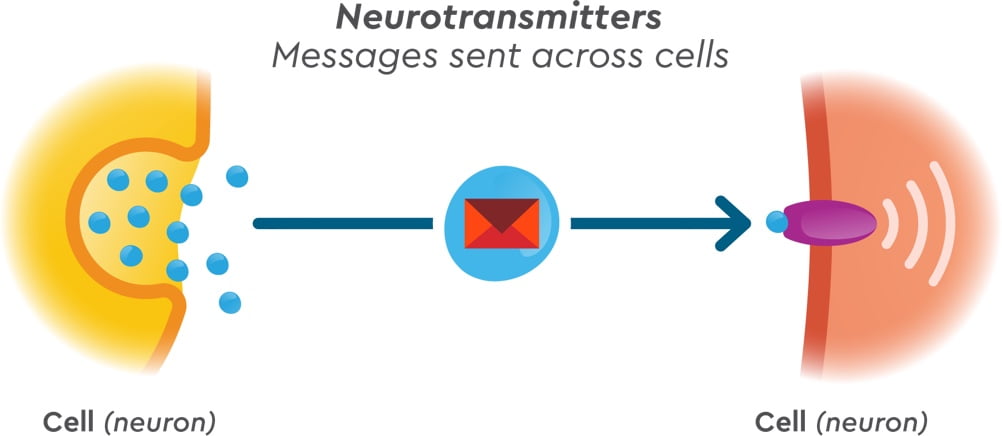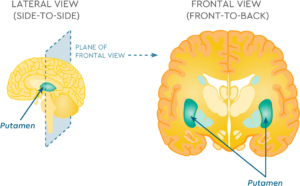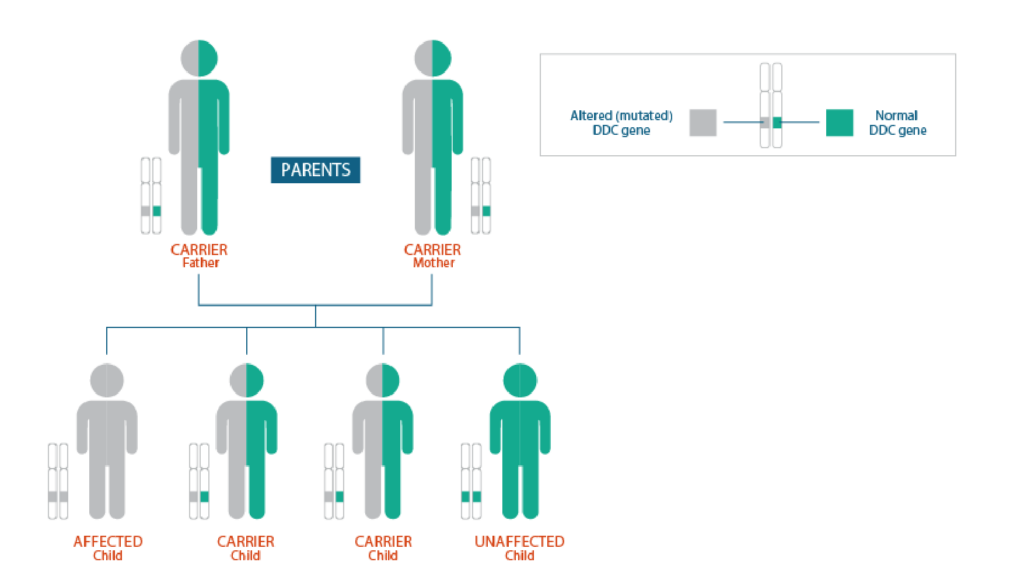
What is AADC deficiency?
Aromatic L-amino acid decarboxylase (AADC) deficiency is a very rare genetic disorder that affects a child’s muscles and how they develop
- AADC deficiency is a rare genetic disorder
- AADC deficiency affects the brain, causes weak muscle tone, and affects how a child develops
- Symptoms may appear as early as 3 months of age
AADC deficiency can cause issues related to:
It is thought that only around 1:32,000 to 1:90,000 live births globally have AADC deficiency. This makes it a rare disease.
Watch this short animation to learn more about what causes AADC deficiency and the common signs and symptoms of the condition.
AADC deficiency is a rare, inherited condition.
It affects the child’s nervous system…
…and prevents normal childhood development, including movement, eating, speech and mental ability.
AADC deficiency is caused by a change, known as a mutation, in a gene called DDC or dopa decarboxylase.
Mutations in this gene means that the body can only produce a small amount of the AADC enzyme.
The lack or deficiency of AADC affects the body’s production of critical, natural chemicals, called serotonin, dopamine, adrenaline and noradrenaline.
These chemicals act as messengers sent between the cells in the nervous system.
But, without a functional messaging system, important processes in the body are impacted, leading to symptoms that limit the activities of daily life.
The symptoms of AADC deficiency can vary from one child to another, but most affected children show symptoms in the first few months of life.
The most common symptoms include: Low muscle tone – also known as hypotonia or ‘floppy muscles’.
Delays in development – such as the ability to lift and control the head, say words, sit or stand without support, and walk.
And movement problems – especially sudden episodes of eye movements called oculogyric crises. During an episode, the eyes suddenly roll upwards involuntarily.
These episodes can last from a few seconds to hours and can happen several times a day or several times a week.
Involuntary movements, such as contracting muscles, may also happen at the same time.
Children with AADC deficiency may also show signs of: Other involuntary movements, such as sudden jerking, flailing or twisting, excessive sweating or crying, drooling, drooping eyelids, a stuffy or runny nose, irritability, problems with digestion and feeding, sleeping problems, and epileptic seizures.
If you suspect your child has AADC deficiency, ask your child’s doctor for more information about the disorder and testing.
Early, accurate recognition of AADC deficiency can help improve the care and support these children need.
What are the signs and symptoms of AADC deficiency?
AADC deficiency can cause a range of different symptoms, including:
- Floppiness (also known as low muscle tone or hypotonia)
- Delays in development
- Involuntary eye movements (also known as oculogyric crises)
- Multiple symptoms associated with bodily functions such as excessive sweating, runny nose or droopy eyelids
Find out more about the signs and symptoms of AADC deficiency or listen to our podcast “What is AADC deficiency?”
What is a genetic disorder?
- Genetic disorders are caused by a change in a person’s DNA
- DNA is a molecule that contains each person’s unique genetic information
- Some genetic disorders, like AADC deficiency, are caused by changes in the DNA of a single gene
Understanding changes in your genes
- Genes are small sections of DNA and are found in each cell of the body
- They contain instructions for making proteins and enzymes that can influence everything from the colour of your hair, skin, and eyes, to how your body functions
- Sometimes, alterations in your genes can mean that the proteins do not work properly or are not produced at all
What happens in AADC deficiency?
- A gene called dopa decarboxylase (also known as DDC) is required to make an enzyme called AADC
- AADC helps the body to make a molecule called a neurotransmitter, which is used to send messages between nerve cells (called neurons) in your nervous system

These messages are important because they control many of the body’s functions.
Neurotransmitters play a role in:
- Movement
- Learning, memory and cognition
- Behaviour
- Regulating temperature and pain
- Regulating emotions
In AADC deficiency, a change (or mutation) in the DDC gene leads to a decrease in, or no activity of, the AADC enzyme. This results in lower levels of neurotransmitters (messengers), such as dopamine and serotonin. Without enough neurotransmitters, neurons can’t communicate with each other. This means that the body can’t perform important functions, leading to the symptoms of AADC deficiency that can impact daily life.
Because of the low level of neurotransmitters in children with AADC deficiency, the condition is considered to be one of a group of genetic disorders called neurotransmitter disorders.
What is the role of the putamen in AADC deficiency?
The putamen is located at the base of the forebrain. The putamen has a key role in childhood development including learning, movement, speaking and thinking. It is a major site of AADC enzyme activity in the brain.
Since AADC is important in making dopamine, changes to the DDC gene that reduce AADC activity can reduce the amount of dopamine in the putamen.
Without dopamine, children with AADC deficiency can display movement difficulties, behavioural problems, bodily dysfunction and developmental delay.

How is AADC deficiency inherited?
- AADC deficiency is an inherited condition
- Each person has two copies of every gene – one from each parent
- In AADC deficiency, an altered DDC gene must be passed on from both parents

- Two altered copies of the DDC gene – the child will have AADC deficiency
- One altered copy of the DDC gene – the child will be a carrier for AADC deficiency
- No altered copies of the DDC gene – the child will be unaffected
Because both copies of the DDC gene must be altered for a child to have AADC deficiency, it is known as an autosomal recessive disorder.
- Download a symptom questionnaire that will help you discuss your child’s condition with their doctor
- Watch one family’s experience of living with AADC deficiency
GL-AADC-0990 | February 2023